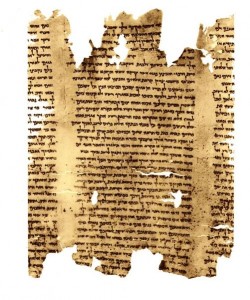 Jerusalem, Israel — An archaeological organization in the nation of Israel has teamed up with the web and technology giant Google to place images of the Dead Sea Scrolls online for worldwide viewing.
Jerusalem, Israel — An archaeological organization in the nation of Israel has teamed up with the web and technology giant Google to place images of the Dead Sea Scrolls online for worldwide viewing.
Google states that it is releasing a virtual library, which contains approximately 5,000 images of the Biblical artifacts. Among the images include parts of the Book of Deuteronomy, which contain the Ten Commandments, as well as portions of the first chapter of the Book of Genesis, which outlines God’s creation of the heavens and the earth.
According to reports, Israeli officials wanted to make the images more readily available after being accused of “monopolizing” on the ancient artifacts.
“Only five conservators worldwide are authorized to handle the Dead Sea Scrolls,” Shuka Dorfman, director of the Israel Antiquities Authority, told reporters. “Now, everyone can touch the scroll on screen around the globe.”
Google says that the project has been two years in the making, and that the Authority has been working with technology that was invented by NASA to make the images available.
“With the generous lead support of the Leon Levy Foundation and additional generous support of the Arcadia Fund, the Israel Antiquities Authority and Google joined forces to develop the most advanced imaging and web technologies to bring to the web hundreds of Dead Sea Scrolls images, as well as specially developed supporting resources in a user-friendly platform intended for the public, students and scholars alike,” the Authority further explained.
The Dead Sea Scrolls were discovered between the 1940’s and the 1960’s in the Qumran caves of the Judean Desert. While some of the documents recovered from the area are writings related to the Second Temple era, others include the Hebrew Scriptures that are now in our Bible.
“About 230 manuscripts are referred to as ‘Biblical Scrolls,'” the Authority explains. “Among the scrolls are partial or complete copies of every book in the Hebrew Bible, except the book of Esther. About a dozen copies of some of these holy books were written in ancient paleo-Hebrew — the script of the First Temple era, not the standard script of the time.”
“Scroll dates range from the third century BCE to the first century of the Common Era, before the destruction of the Second Temple in 70 CE,” it continues. “[A]bout 15% were written in Aramaic and several in Greek. The scrolls’ materials are made up mainly of parchment, although some are papyrus, and the text of one scroll is engraved on copper.”
It is believed that those that hid themselves from wars and other catastrophes placed the writings inside of the caves, which have been a virtual “gold mine” for archaeologists and researchers. Photos of some of the discovery sites have been placed online in addition to the images and text of the scrolls.
“Cave 2 yielded fragments of many Biblical books, including all five books of Moses, Jeremiah and Psalms,” the official website for the project outlines. “Cave 8 contained fragments of Genesis, Psalms, a mezuzah, a hymn and tefillin.”
The scrolls, photographs, maps and other information about the discovery of the Dead Sea Scrolls may now be viewed online at www.deadseascrolls.org.il
Become a Christian News Network Supporter...


